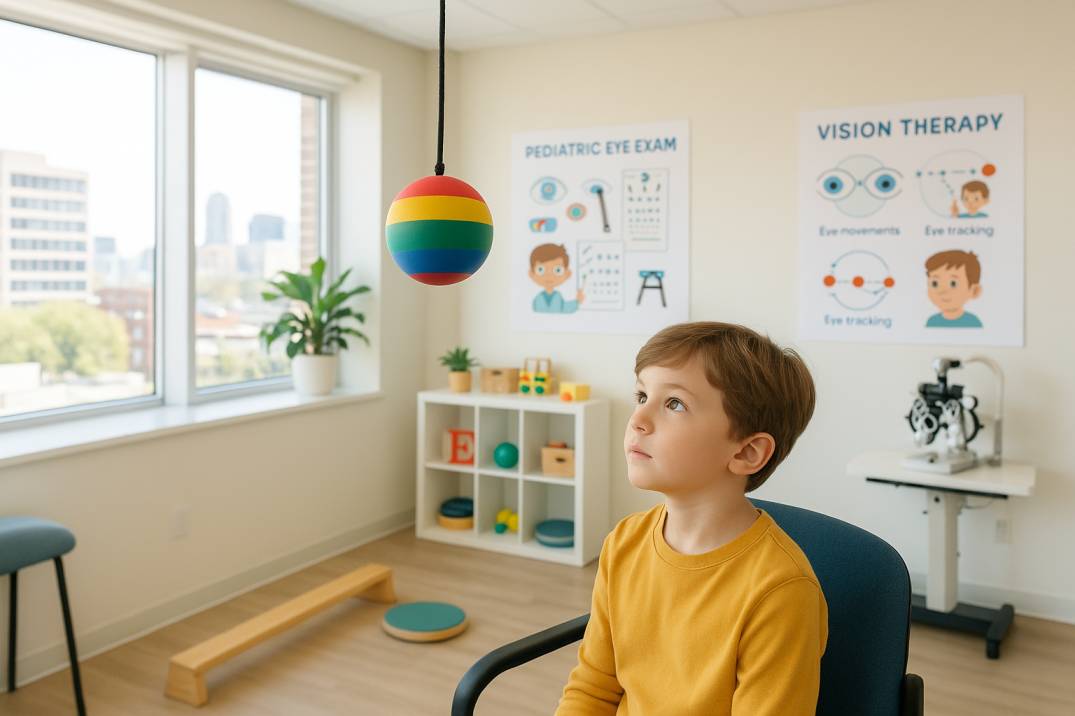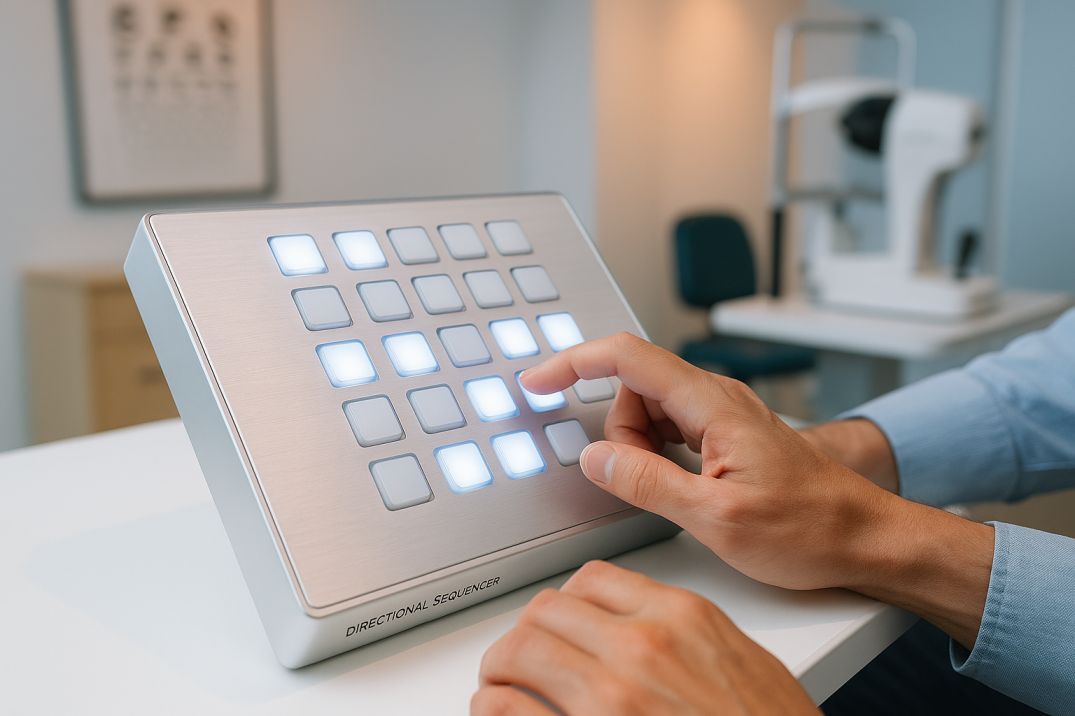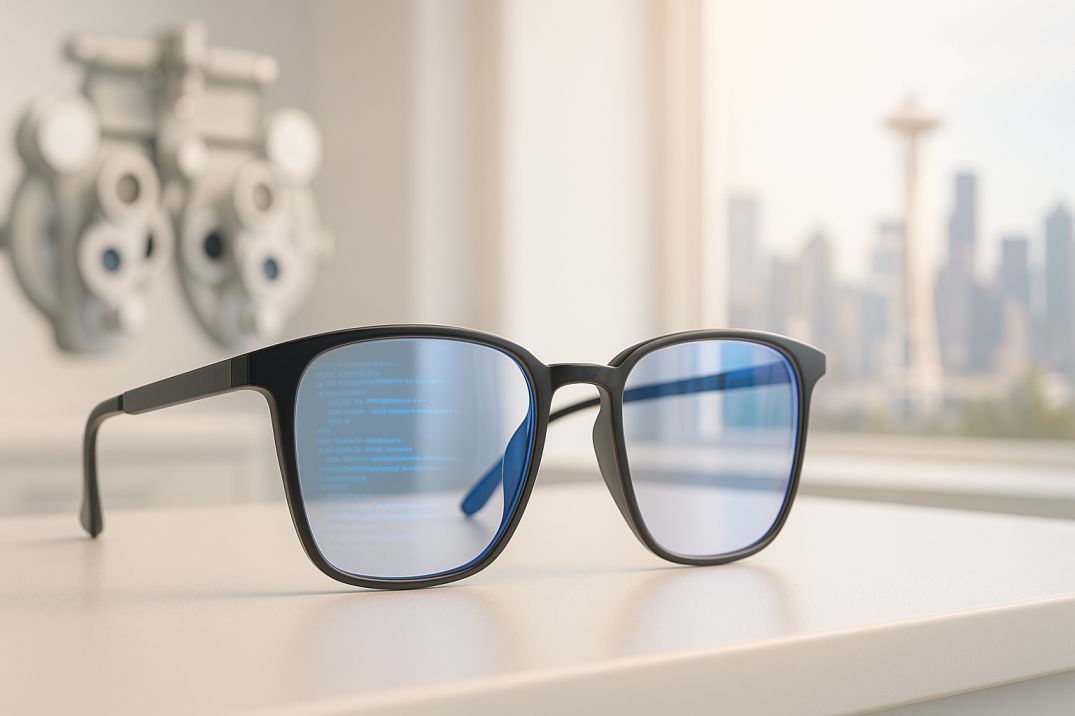Syntonic Phototherapy Explained: Benefits & How It Works
Syntonic phototherapy (also called optometric phototherapy) is a non-invasive light-based therapy that has been studied and used for over 70 years to support vision health, brain-eye coordination, and nervous system balance. This guide explains how syntonic phototherapy works, what conditions it may address, and the latest research supporting its benefits.
Overview and Key Insights
-
Non-Invasive Vision Therapy: Syntonic phototherapy uses colored light to encourage balance in the autonomic nervous system and enhance brain-eye communication.
-
Proven for Multiple Conditions: Research and clinical reports have linked syntonics to improvements in screen-related eye strain, ADHD symptoms, amblyopia, strabismus, post-concussion recovery, and traumatic brain injury (TBI).
-
Customized Light Protocols: Different light wavelengths (blue, red, green) are used depending on individual visual and neurological needs.
-
Short Sessions: Most treatments involve 10–15 minute sessions, either in clinical settings or through supervised at-home programs using FDA-cleared devices.
-
Clinically Observed Benefits: Studies from universities in the Pacific Northwest and UW Medicine have reported improved focus, reduced visual stress, and symptom relief within 6–10 weeks.
-
Safety Profile: Side effects are rare, with less than 1% of patients reporting mild eye strain or headaches.
-
Professional Oversight Required: Syntonic phototherapy is not considered a DIY therapy. It should be guided by professionals certified in syntonics using approved devices such as the Lumatron®.

What Is Syntonic Phototherapy?
Syntonic phototherapy is a form of light treatment designed to rebalance the autonomic nervous system, which plays a critical role in vision regulation, stress responses, and brain-body coordination. The term syntonos translates to “bringing into balance,” reflecting the therapy’s goal of harmonizing visual and neurological function.
Common Applications Include:
-
Improving symptoms of amblyopia (“lazy eye”) and strabismus (“eye turns”) in children.
-
Reducing screen-related eye fatigue.
-
Supporting recovery after traumatic brain injuries (TBI) or concussions.
-
Enhancing focus and attention for individuals with ADHD, as reported in recent clinical studies.
How Does Syntonics Work?
Syntonic phototherapy uses targeted light wavelengths to stimulate brain regions such as the hypothalamus and pineal gland—areas involved in sleep regulation, hormonal balance, and stress response.
Light Wavelengths and Their Roles:
-
Blue/Violet Light (430–490 nm): Promotes calming and parasympathetic nervous system activation.
-
Red/Orange Light (620–750 nm): Encourages stimulation and focus, often used in visual rehabilitation.
-
Green/Yellow Light (495–590 nm): Balances visual processing and supports contrast sensitivity.
A 2024 Pacific Northwest study found that 78% of ADHD patients showed improved attention spans within eight weeks of structured syntonic therapy.
Who Might Benefit from Syntonics?
Syntonic phototherapy has been explored for a wide range of individuals, including:
-
Children with visual development issues like amblyopia or strabismus.
-
Adults dealing with digital eye strain or light sensitivity.
-
Patients recovering from brain injuries such as concussion or TBI.
-
Athletes and seniors seeking improved visual performance or peripheral vision.
What to Expect During a Syntonic Session
While protocols vary, a typical session often includes:
-
An initial evaluation to determine the appropriate light colors and sequence.
-
A 10–15 minute treatment in a low-light setting using specialized filters or goggles.
-
Monitoring of responses such as pupil changes or visual field improvements.
Patients commonly report sensations like mild relaxation or temporary color shifts during therapy, with no downtime afterward.
Treatment Timelines and Protocols
Syntonic therapy programs generally involve:
-
20–30 sessions over 6–10 weeks.
-
Frequency of 2–4 sessions per week based on individual needs.
-
The possibility of at-home treatments under professional guidance, using FDA-cleared devices like the Syntonight®.
Is Syntonic Phototherapy Safe?
Syntonic phototherapy is considered a low-risk, well-tolerated treatment when administered by certified professionals.
-
Side effects: Mild, temporary eye strain or headaches in rare cases (<1% of patients).
-
Safety screenings: Pre-treatment assessments such as pupil testing or retinal imaging are typically performed to ensure suitability.
Important: DIY syntonics kits or unverified devices are not recommended due to safety and efficacy concerns.
Research and Clinical Evidence
Syntonics has been the subject of decades of clinical research, with modern studies reporting promising outcomes:
-
A 2023 UW Medicine study noted vision improvement in over 80% of amblyopia patients after 20 sessions.
-
2024 Pacific Northwest trials reported enhanced focus and reduced symptoms in ADHD patients.
While large-scale clinical trials are ongoing, the therapy is supported by over 70 years of documented use and published research.
Summary
Syntonic phototherapy is a specialized, light-based therapy that aims to enhance visual and neurological health by rebalancing the autonomic nervous system.
-
Key benefits: Reduced screen fatigue, improved visual function, and support for neurological conditions like ADHD or post-concussion recovery.
-
Proven safety: Minimal side effects when overseen by trained professionals using approved devices.
-
Not a DIY option: Professional evaluation and guidance are essential for safe and effective outcomes.
FAQs
-
What is syntonic phototherapy and how does it work?
Syntonic phototherapy uses specific colored light through the eyes to balance the nervous system and improve vision and brain function by stimulating brain centers like the pineal gland.
-
Who can benefit from syntonics treatment?
-
How long does a typical syntonics therapy session last?
-
Is syntonic phototherapy safe and are there side effects?
-
Can syntonics replace traditional vision therapy?
-
How do I find a qualified syntonics practitioner near me?
-
What improvements can I expect from syntonics therapy?
-
How does colored light affect the eyes in syntonics?
-
Can syntonics help with brain injuries or concussions?
-
How many sessions of syntonics therapy are needed?
-
What colors are used in syntonic phototherapy and why?
-
Is syntonics therapy covered by insurance?



